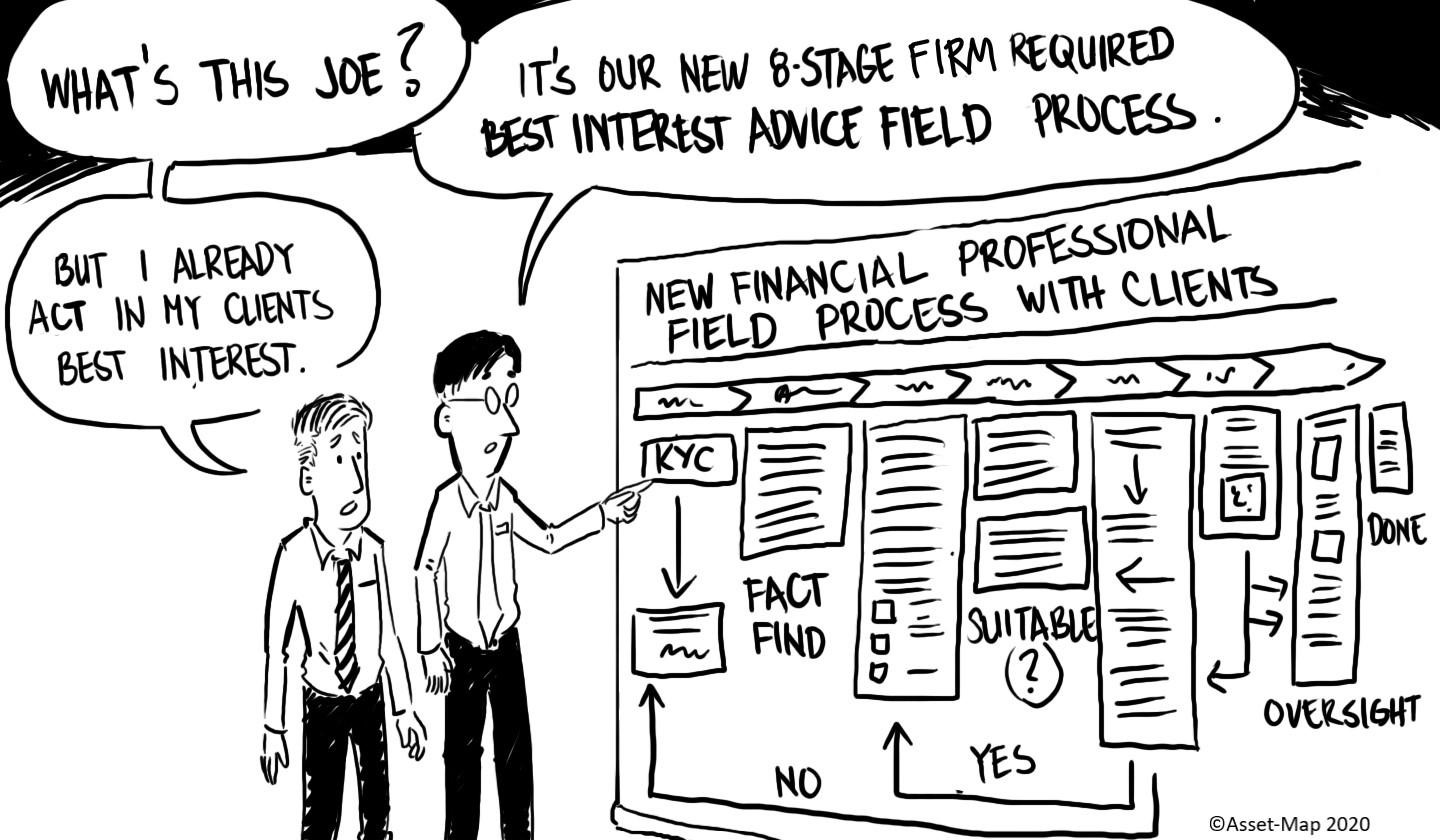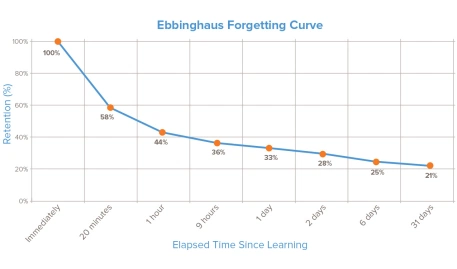
A Tradition of Customer Care is Not Enough
Before the Department of Labor Regulation of 2016 and the newest Regulation Best Interests (BI) now mandated by the SEC and mimicked in some State insurance departments, advisors have historically had a strong alignment with ideals of suitable recommendations. Our own financial services oversight requirements often called for completed client and risk profiles, and often disclosures of practices to clients.
These suitability reviews are not new to many financial professionals, regardless of whether they are advisors who recommend solutions or sales professionals who provide advice. At the end of the day, both suitability audits and best interests standards come down to a professional’s ability to prove that there was a prudent process and collection of client fact patterns that culminate in recommendations or implementations that the customer (or a regulator) would reasonably conclude was in their best interests.
As many professionals and firms are figuring out how to address this through a repeatable process that can be used in their business, a resounding theme continues to emerge: thorough fact-finding and the ability to produce it upon inspection is the most consistent defense.
Think about what that means for most professionals. The resounding response is that they already act in their client’s best interests. A long history of prudence, due diligence, and client care has permeated the relationship culture of advisors who chose the profession long before the CFP and FINRA set fiduciary standards.
And yet there have been events and concerns expressed by consumers and the media that question that very alignment of the financial services industry, including the financial crisis in 2009. So how does a professional align their interests in delivering on the value proposition without massive disruption to their current process of delivering financial advice?
Focus on the Facts
Throughout both of our experiences supporting thousands of financial professionals globally, the focus on collecting client facts and then being able to produce them in a consumable manner on-demand has been core to our missions.
No matter where a financial professional falls on the spectrum of financial advice delivery, one thing is clear: fact-finding is not only a requirement but essential to delivering best-interest advice. The challenge is that the process of collecting facts about a client and their current situation is extremely personal and therefore varied among professionals.
The “yellow pad” process of collecting notes on paper is still prolific in the advice industry and often the only way many seasoned advisors will work - despite the digital revolution. While many more digitally-minded professionals have moved to using laptops to collect facts digitally, written notes typically lack the speed of external party comprehension.
Remember that the point of best-interest regulation compliance is being able to produce defensible documentation that a prudent process was (and continues to be), executed for a client. If the notes and fact-pattern are incomprehensible to a reviewer 10 years from now, then it’s useless in the defense.
There’s also a significant risk of documenting and transferring the knowledge of a client within a practice when it’s collected predominantly by one advisor in a meeting. As firms are growing with succession advisors and support teams, being able to communicate the nuances of client details is at severe risk of being lost. Advisors who attempt to share those details verbally, or document their files and client notes post meetings, have a serious BIR disadvantage.
The Ebbinghaus Memory Study concluded that after just 20 minutes, almost half of our short-term memory is gone. After one day, two-thirds of the details from the client meeting are lost forever. The process and workflow an advisor has in place after a client meeting can make a serious difference in the practice from a documentation and opportunity standpoint.

The question financial professionals must ask themselves is whether or not their practice of collecting, documenting, sharing, and delivering a client’s KYC information on-demand is up to the Best Interest standard.
The risk is clear that financial professionals who don’t commit to installing a repeatable, fact-finding process now (likely through technology) are exposing themselves to legitimate or even frivolous assertions of failing one’s fiduciary duty. Moreover, the risk to the industry in professional reputation and public trust may cost the entire industry if action isn’t taken.
Upside in Process
Advice-led planning and client profiling tools that have the capacity to confirm fact patterns and report on them, should be part of every professional’s toolset and client file. There is a growing trend in the industry to share data collected with their clients and require validation to ensure that the planning facts are accurate.
The CFP Board’s Practice Standard was insightful to this perspective when they concluded that advisors who cannot obtain the information they need shall either “restrict the scope of the engagement to those matters for which sufficient and relevant information is available; or terminate the engagement.”
Think about what that means. If professionals can’t get the information and provide it back to clients, then perhaps it’s not worth it to engage in the first place. Any advisor who has been in practice for some time knows that fact-finding reveals the immediate financial triage needed and further identifies areas for financial improvement. Lacking in data and professional perspective is clearly dangerous to all parties.
Conversely, when we have a clear picture of our clients’ fact patterns, engagement becomes significantly more productive and professionals can identify more opportunities that are not initially obvious.
But producible, verified fact-finding is not enough on its own. What tends to be missing from most professionals’ defense of suitability and best interests is the soft stuff - the knowledge and impressions that are uniquely human and stored in a professional’s head and heart.
What we mean is the knowledge of the family dynamic is sometimes more important than knowing how many dependents a client has. Capturing the impressions around risk and returns, taxes and social capital, and biases towards equitable estate distributions versus “spend it all” attitudes are difficult to capture in a fact-gathering report.
This is why professionals have a near-practice obligation to capture these nuances in every interaction with clients. If the details of concerns, impressions, hopes, and desires are left out of the client file, then they didn’t exist.
A common disagreement we notice in the complaint processes that become public are a misalignment of expectations associated with the impression of how much risk someone took in a solution recommended by a professional. Aligning risk is a big deal, and a person’s state of mind at the time of implementation is hard to capture with a form.
Professionals need to document everything from their experienced perspective immediately after concluding a client interaction. Oftentimes, professionals don’t have time to type it, but they can talk.
Dictation services have existed for years and medical professionals know the benefits and risk-mitigation they provide them in transcribing and transferring that knowledge to their peers. Immediate dictation memorializes the interaction with copious detail following a meeting, and it’s a best practice that professionals everywhere should be adopting.
Despite the fact that customer relationship management (CRM) tools are the most common technology applications for financial advisors, an abysmal amount of information is being cataloged in general. Most CRMs are nothing more than a glorified rolodex with sporadic customer information. Instead, these tools should be the corporate memory of a client and include both time-stamped, validated fact-finding reports and professional memory through dictation transcription.
Advisors who use client profiling and professional mental transcription services report significant upside in their practice.
In fact, in a 2015-2019 global wealth management enterprise study of 4,500 advisors, financial professionals using Asset-Map’s profiling engagement tool reported double-digit gains in all five years for AUM, insurance, and annuity production versus non-adopters.
And a 2017 Fortune 50 asset management firm concluded that professionals using Mobile Assistant’s dictation service averaged $400,000 higher AUM and almost $2M in AUM growth for new hires.
The reality proves out that better fact-finding and attention to nuances not only serves the best interests defense, but also helps professionals credibly identify and solve more problems.
Adam Holt, MBA, CFP, ChFC is the Founder and CEO of Asset-Map, an engagement experience for financial professionals that focuses on household fact-pattern visualization and tracking funding progress toward financial priorities. Asset-Map is used by thousands of professionals worldwide and millions of customers to facilitate better advice-led conversations that elevates financial decision making. Adam has been a practicing wealth management financial professional for the past 22 years.
Corey Westphal is the Founder and CEO of Mobile Assistant, a dictation and transcription service dedicated to the secure capture and transmission of advisor supported client data. Supporting thousands of professionals and firms, Mobile Assistant has developed the leading-edge interactive methodologies to capture critical information and store it where advisors need it most- directly in their CRM.
The views and opinions expressed herein are the views and opinions of the author and do not necessarily reflect those of Nasdaq, Inc.
